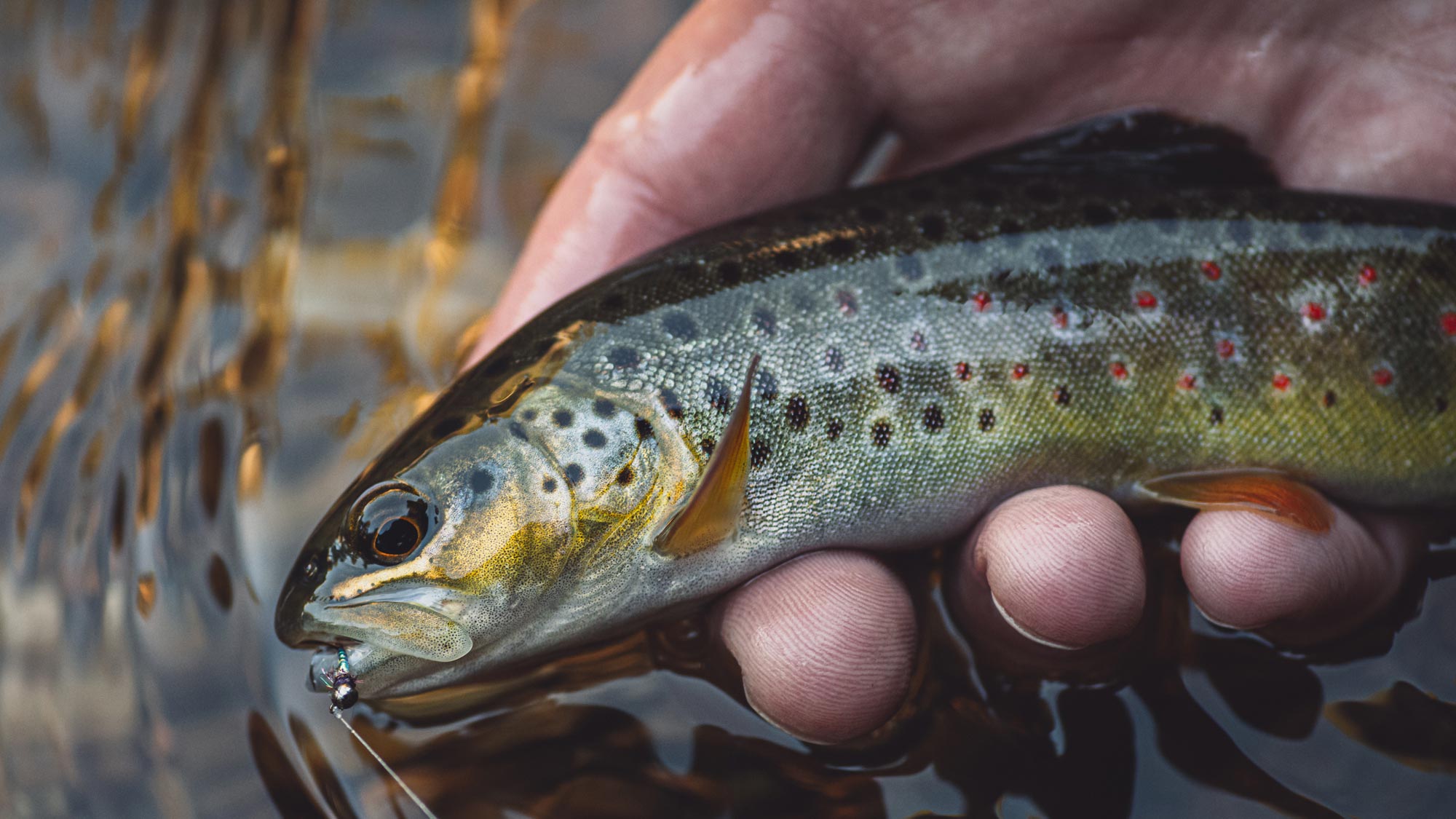The leaves have fallen and the first snowstorms have signaled the colder months ahead. Trout are looking to fuel up as they prepare themselves for winter. Having an understanding of their cyclical habits will enable you to present the best fly choices as conditions change. In lower temps and lower flows, a few key adjustments will help you catch fish during the toughest time of the year. Smaller flies, lighter tippet, and clean presentation are imperative as it’s a lot easier to spook fish in these conditions. We’ve picked out a great selection of flies that are proven performers during the colder months—it’s up to you to put them in front of the fish :) 1. Coffey's Conehead Sparkle Minnow—Royal Oil #6
1. Coffey's Conehead Sparkle Minnow—Royal Oil #6
2. Coffey's Conehead Sparkle Minnow—Sculpin #6
3. Flexi Girdle Bug—Coffee / Black #10
4. Yakoda Micro Bugger—Black / Black Nickel #16
5. Tungsten Beadhead Hare's Ear—#16
6. Yakoda Opal Annelid—Pink #14
7. Yakoda QB Baetis—Olive #20
8. Yakoda Crackleback—Black #18
9. Griffith's Gnat—#18
10. Parachute BWO—#20
Just like trout, we’re also creatures of habit, and there are a handful of flies that we always fish in the winter. Streamers, stoneflies, midges, annelids, pheasant tails, and leeches consistently work and all of them are included in this quarter’s selection. It’s often how you pair the flies up that will lead to success.
The vast majority of cold weather feeding activity is going to happen sub-surface so lets focus on the flies that you’ll likely see the best results with. The size of the water you’re fishing should determine which flies to fish. Bigger water = bigger flies and vice versa. Starting at the top, the sparkle minnows are great patterns to strip or dead drift in larger water. When stripping them, they act as a live baitfish. Use a stripping motion that mimics them trying to escape from a predatory fish. When dead drifted, they act more like a dead or dying baitfish which is an easy meal for an opportunistic fish. If you’re dead drifting the sparkle minnow we recommend trailing it with the Flexi Girdle Bug as sometimes a fish will look at a big meal and refuse it, then gobble up a smaller offering behind it.
Leeches are always a top in our rotation as their lifelike movement often coaxes a trout to move and eat. Our black Micro Bugger is a year round work horse and can be stripped or dead drifted with any combination of the the other nymphs in this box.

On a normal day we’ll cycle through flies until we figure out what the fish are eating and a pheasant tail in some form tends to do the trick more often than not. The Tungsten BH Hare’s Ear is a great pattern any time of year as it mimics small stoneflies and larger mayflies. Try fishing it trailed by the pink Yakoda Opal Annelid, Crackleback Midge, or QB Baetis.
Depending on where you live, a warm winter afternoon can trigger small dry fly hatches. These bugs will almost certainly be midges and BWO mayflies so pay attention to the natural signs around you. You’ll often find rising trout later in the day as the temperatures reach their peak. If you notice activity on the surface, try fishing a double dry setup with the Griffith’s Gnat and Parachute BWO. Before defaulting to exclusively fishing a dry fly (or two), try to determine if the fish are sipping above the surface or just below. Fish sipping on the surface are eating dry flies while the fish sipping just below the surface are eating emergers and will be looking for something like the QB Baetis or Crackleback Midge that sits in the film just below the surface. Take your time and observe their feeding behavior before deciding what flies to tie on.
Have fun out there and enjoy the benefits of winter fishing—the cold leads to less people on the water and more peace and quiet as you fish, and for us, that’s one of our favorite things about winter fishing. As always we thank you for being a Yakoda QFC subscriber. We hope these purposefully selected flies and fishing tips make a difference during your time on the water this fall and winter.



